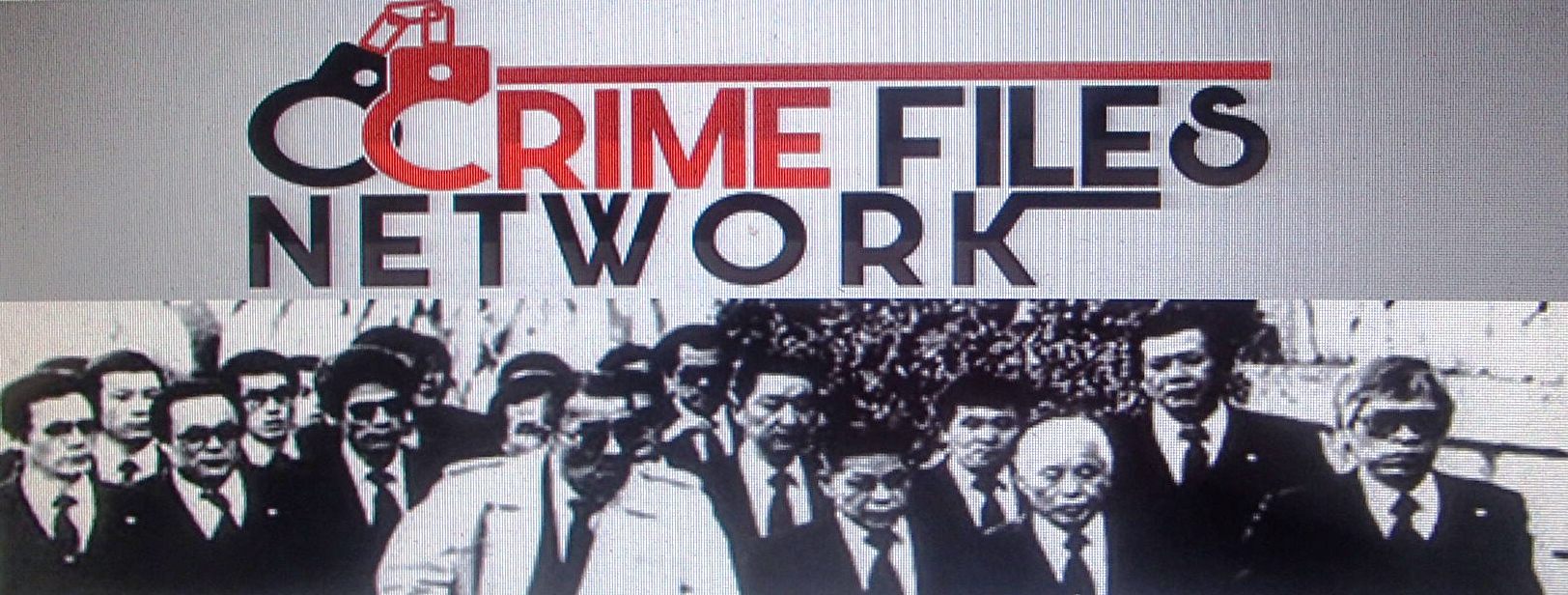The British Empire did not invent the concentration camp during the Boer War, which is often suggested. The Spanish used them in Cuba during the Ten Year War. But the British use of them in an attempt to end the guerrilla warfare which erupted during the third year of the Boer War was an atrocity on a vast scale, essentially making war on a civilian population rather than an enemy army. The camps, which consisted of tents as the only shelter for the prisoners, eventually numbered over 100, with 45 erected for the Boers and over sixty for Africans unfortunate enough to live in the territories “controlled” by the British army.
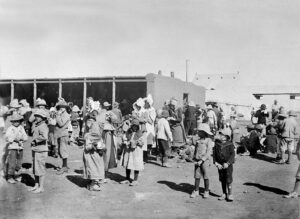
WOMEN & CHILDREN IN BOER CONCENTRATION CAMP
The first camps were developed to shelter refugees from the war who had lost their homes to the fighting. In 1900 the British, under Lord Kitchener, adopted the policy of using scorched earth tactics, destroying anything which could be conceived as being of use to the Boer guerrillas, and imprisoning the families of guerrillas as well as anyone suspected of giving them shelter or support. As the British exploited this tactic the displaced families were rounded up and sent to the concentration camps, where the families of suspected guerrillas received less food than those merely displaced.

Boer militia at the Battle of Spion Kop
Within the camps there was little available to support healthy hygiene, sanitation facilities were often non-existent, and food was of poor quality. There was not enough food nor enough variety to support nutritional needs. Nearly 30,000 Boers died in the camps, more than two-thirds of them children, of typhoid, measles, other communicative diseases, as well as scurvy and dysentery. In the camps for Africans, another 20,000 died for many of the same causes. Africans for the most part were not involved in the conflict between the Boers and the Dutch, but were displaced nonetheless by British policy.
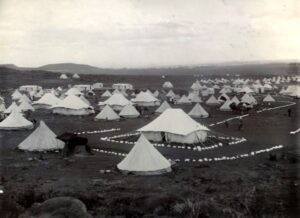
This was to lay the groundwork for the concentration camps that would cause the deaths of over 4,000 women and 22,000 children under the age of 15. As the scorched earth policy continued, Boer women and children were left homeless. Roberts decided to take these displaced families into the camps as well.
The British authorities, including Lord Kitchener on the scene and officials in the Foreign Office in London, were aware of the atrocities as they occurred and discussed the different methods which could be used to keep the British public from learning of it and expressing its outrage. The British dispatched Lord Milner to the scene to try to make the system less deadly and keep it as quiet as possible. One letter from Milner to British officials in London reads, “…however blameless we may be in the matter, we shall not be able to make anybody think so…”
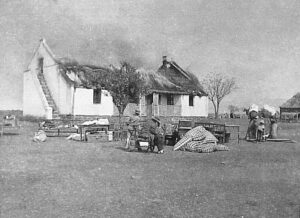
One British response to the guerrilla war was a ‘scorched earth’ policy to deny the guerrillas supplies and refuge. In this image Boer civilians watch their house as it is burned.
One theory that Milner proposed, rather than taking steps to stem the death rate, was to wait, and after the weaker of the prisoners died the stronger ones would be better able to recover and the death rate would drop. Those numbers, rather than the earlier, would then be reported to British officials and the press. When the numbers continued to rise his theory was abandoned.
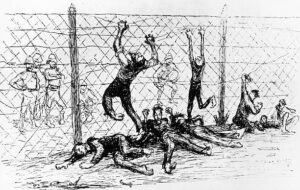
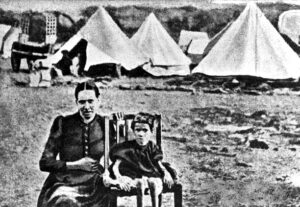
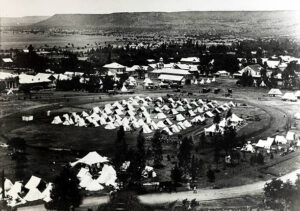
Before the camps were closed about 10% of the entire Boer population died in them. The Boer War ended with the former Boer states becoming a dominion of the British Empire, which gained great wealth from the gold and diamond mines which they acquired from the Boers. Limited self-government was granted to the Boers following the war.
![]()
